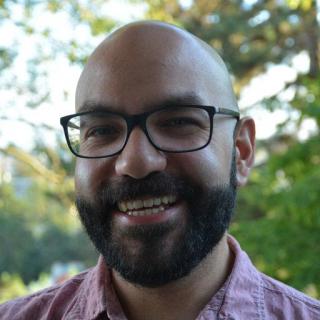Lecture: Dogukan Apaydin – A chemist’s toolbox for a more sustainable future
We invite you to Dr. Dogukan Hazar Apaydin's lecture, which will be held on Tuesday, October 29, 2024 at 14:00 in room P16.
A chemist’s toolbox for a more sustainable futureAs our energy demand increases continuously, the effect of it on the climate becomes more and more visible due to the anthropogenic carbon dioxide (CO2) we release into the atmosphere. In this lecture, I will demosntrate how materials chemistry combined with photo and electrocatalysis can help reducing our carbon footprint and even create value-added products from CO2 and pollutants. The lecture will cover material examples of nature-inspired and natural materials to inorganic semiconductors and organic-inorganic hybrid materials.

He received his Master’s Degree in Polymer Science and Technology from Middle East Technical University, Turkey. His PhD studies brought him to Austria and he completed his PhD in Physical Chemistry (2018) at Johannes Kepler University Linz under the supervision of Prof. Dr. Niyazi Serdar Sariciftci. During the PhD studies he had the chance to visit Yamagata University in Japan and Lawrence Berkeley National Laboratories in the USA for research visits. Following the PhD studies, he joined the Institute of Science and Technology as a postdoctoral researcher (2018) and took active part in setting up the first chemistry laboratory in the institute. In 2020, he joined the group of Molecular Materials Chemistry as a Team Leader working towards his habilitation on the photoelectrocatalysis, CO2 utilization and nitrogen activation.
To this date had authored/co-authored more than 50 publications and delivered 15 talk/invited talks in conferences. In addition, he engages in public outreach activities such as Lectures4Future, Open House Days (organized by TU Wien) and Long Night of Research (Lange Nacht der Forschung, organized by TU Wien).
His research focuses on developing organic-inorganic hybrid materials for photoelectrocatalytic applications as well as tuning metal surface chemistry to influence the catalysis kinetics. Throughout his research he gained experience in in-situ spectroelectrochemistry (UV-Vis, ATR-FTIR) for the characterization of materials under applied potential. The main research focuses on carbon dioxide capture and utilization as well as photoelectrocatalytic hydrogen formation.
| Published | |
|---|---|
| Link | https://www.fch.vut.cz/en/faculty/for-media/f81551/d267013 |